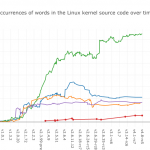or: How I finally came around and started appreciating Docker.
tl;dr: ShellCheck is now automatically compiled for Windows using Wine+GHC in Docker, without any need for additional Windows CI.
I don’t know what initially surprised me more: that people were building ShellCheck on Windows before and without WSL, or that it actually worked.
Unless you’re a fan of the language, chances are that if you run any Haskell software at all, it’s one of pandoc, xmonad, or shellcheck. Unlike GCC, Haskell build tools are not something you ever just happen to have lying around.
While Haskell is an amazing language, it doesn’t come cheap. At 550 MB, GHC, the Haskell Compiler, is the single largest package on my Debian system. On Windows, the Haskell Platform — GHC plus standard tools and libraries — weighs in at 4,200 MB.
If you need to build your own software from source, 4 GB of build dependencies unique to a single application is enough to make you reconsider. This is especially true on Windows where you can’t just close your eyes and hit “yes” in your package manager.
Thanks to the awesome individuals who package ShellCheck for various distros, most people have no idea. To them, ShellCheck is just a 5 MB download without external dependencies.
Starting today, this includes Windows users!
This is obviously great for them, but the more interesting story is how this happens.
There’s no parallel integration with yet another CI system like Appveyor, eating the cost of Windows licenses in the hopes of future business. There’s not been a rise of a much-needed de facto standard package manager, with generous individuals donating their time.
It’s also not me booting Windows at home to manually compile executables on every release, nor a series of patches trying to convince GHC to target Windows from GNU/Linux.
It’s a Docker container with GHC and Cabal running in Wine.
Ugly? Yes. Does it matter? No. The gory details are all hidden away by Docker.
Anyone, including Travis CI, can now easily and automatically compile ShellCheck (or any other Haskell project for that matter) for Windows in two lines, without a Windows license.
If you want ShellCheck binaries for Windows, they’re linked to on the ShellCheck github repo. If you want to take a look at the Docker image, there’s a repo for that too.
ShellCheck has had an official Docker build for quite a while, but it was contribution (thanks, Nikyle!). I never really had any feelings for Docker, one way or the other.
Consider me converted.


